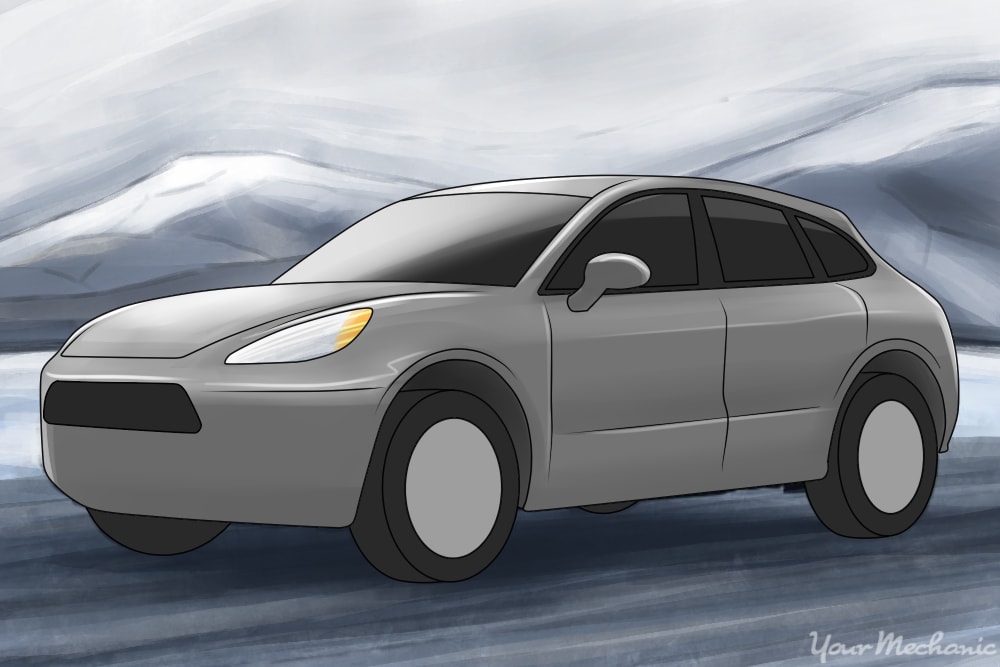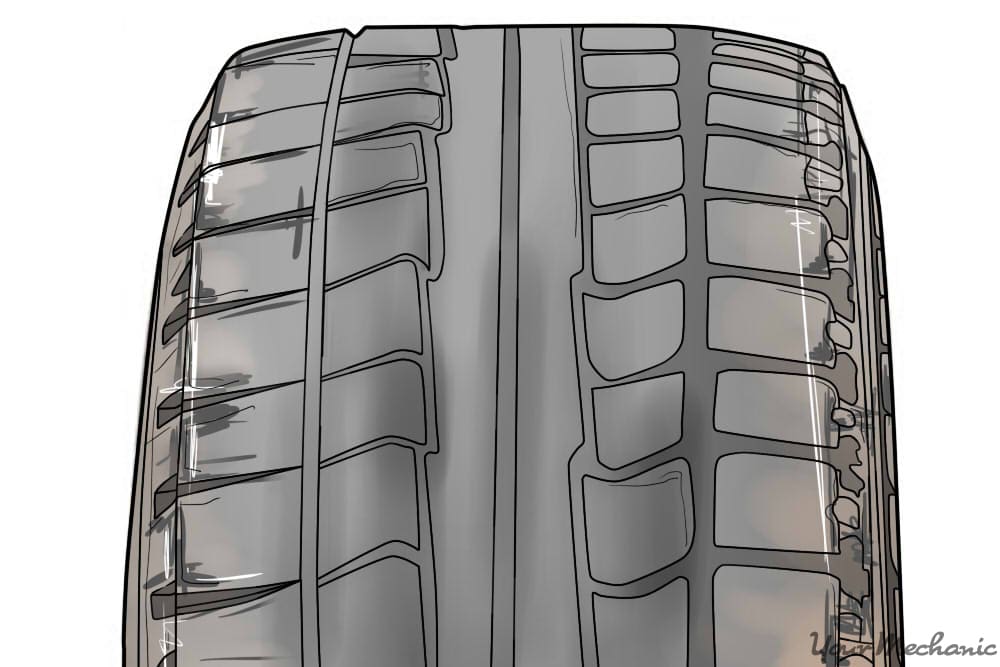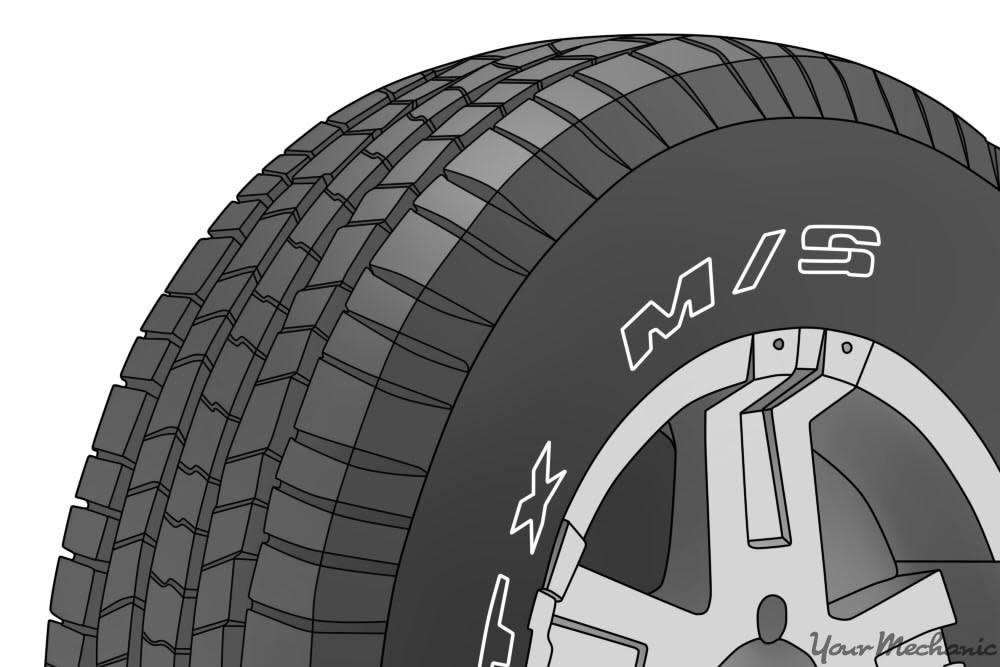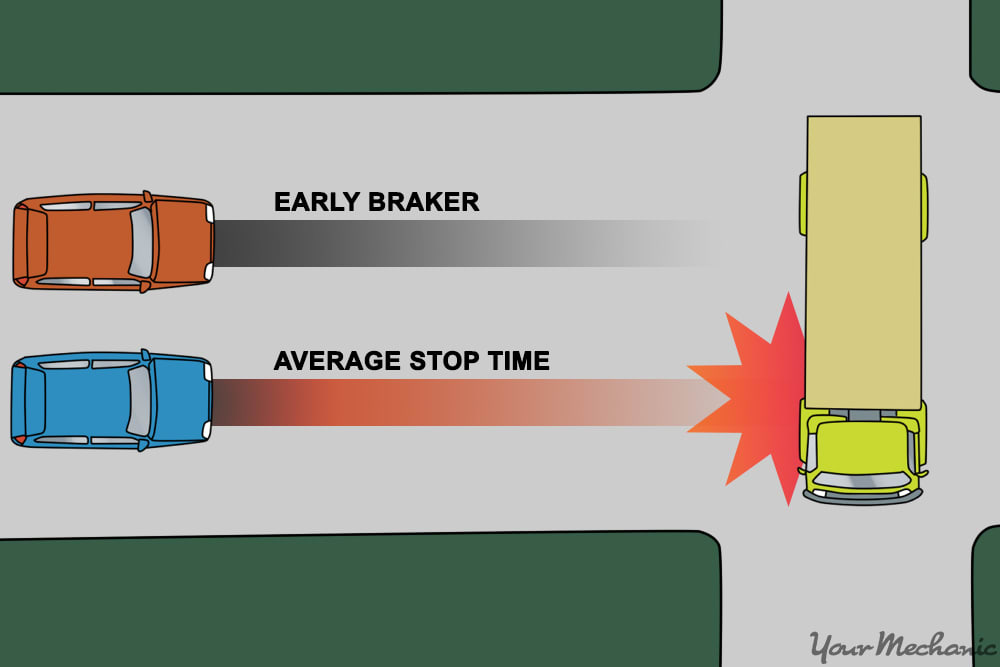

If you are from an area with consistently inclement weather, you’ll know the hardships of driving in the winter. Between the snow, the ice, and the temperature, winter makes for driving at its harshest. Sports utility vehicles or SUVs may be bigger and more sturdy vehicles, but they can slip and slide just like any other car on the road. Keep reading to learn exactly how to stay safe when driving your SUV in the winter months.
- Warning: Never believe that you are safe just because you are in a large sports utility vehicle. In the worst weather conditions, SUVs can still lose control and slide around just like any other car.
Part 1 of 2: Update your tires
Even if your sports utility vehicle comes with four-wheel driving features, it’s never a good idea to depend on your regular tires for substantial traction.
Follow these steps to learn how to update your SUV’s tires for the winter season.
Step 1: Check your current tires. Take a look at the tires you currently have and see if the tire treads are worn out. Check if the tires are inflated to the recommended pressure for the season in your area.
If the tires are not worn out or if they are all-season tires, you might consider driving your SUV in the winter with your current tires.
If the tires are worn out or deflated, or if you are looking to purchase more winter-appropriate tires, proceed to the next step.
- Tip: Make it a habit to check your tire pressure weekly during the winter. This will ensure that you never let any tire issues go unnoticed or unsolved.
Step 2: Choose and purchase the proper tires. Head to your local automotive shop and look out for tires that have an “M+S” marking on them. This marking signifies that the tires are winter-appropriate and can handle snow and other slippery terrain.
Step 3: Change your tires. Change out your current tires and replace them with your new winter-appropriate set.
If your local shop doesn’t change out your car tires for you or if your tire treads are lightly worn, call a qualified mechanic to rotate the tires before snow hits the ground.
Part 2 of 2: Drive safely in the winter with your SUV
Step 1: Be alert about other cars. Even if you are a stellar driver and prepared for winter, the same cannot be said for everyone else on the road with you. Try to drive very cautiously around any other drivers or cars in your area, especially when the winter weather is harsher than usual.
While you should always be on the lookout for other cars on the road with you, it’s very important to remain aware during the winter season (especially in the evenings, during storms, or whenever the visibility is low.)
Make a point to regularly look ahead to spot any reckless driving or accidents ahead of you. You should also look in your rearview mirror regularly and spot any dangerous drivers coming up from behind you.
- Warning: Whenever possible, stay as far away from any reckless drivers as you can to prevent potential accidents or damage that could have been avoided easily.
Step 2: Mind your stop time. Heavier vehicles like sports utility vehicles tend to weigh more than the average car and take longer to come to a full stop. Therefore, it is important that you apply the brakes when you have sufficient distance and time to stop, especially when roads are covered in snow and ice.
Keep more distance (than you normally would) between your SUV and the car in front of you, and begin braking a few moments earlier than you normally would.
Step 3: Refuel often. Luckily, extra weight is a good thing when it comes to creating sufficient traction when driving in snow. When your gas tank is full, your car is even heavier.
Most SUVs already come equipped with four-wheel drive and this requires more fuel. As your SUV will probably burn through a full gas tank much quicker than normal, you will need to refuel your SUV more often in the wintertime.
It is recommended that you keep your gas tank at, at least, halfway full so that you’ll always have additional fuel for traction and four-wheel driving.
- Tip: Refueling regularly also helps prevent water condensation in the fuel tank. Condensation can mix water into your fuel, causing contamination which can lead to holes in your fuel tank or other dangerous outcomes.
Step 4: Take care when turning. It is also important that you are extremely cautious when making turns in your SUV during the winter. Larger vehicles, such as sports utility vehicles, already have a higher risk of flipping and turning over and slippery road conditions just add to the risk.
The next time you have to make a turn in harsh winter weather, apply the brakes before entering the turn (pressing your foot on the brake pedal earlier than you normally would). Then, remove your foot from all pedals (both the accelerator and the brake) as you enter the turn. This will create more traction and allow your tires to work properly during the turn in spite of the poor road conditions.
Finally, slowly press your foot onto the accelerator pedal throughout the remainder of the turn, while trying to avoid oversteering, understeering, or losing control.
Loss of control while turning in the winter is one of the most common ways to have your car end up in a snow bank or pile, so be sure to pay attention while making the turn as well!
- Tip: If you are a new driver, try practicing turning, as well as braking slowly, in an empty parking lot or other secluded driving area. This will help you feel more comfortable doing so when inclement winter weather conditions arise.
You should always take extra care and caution when traveling through snow, ice, wind, and sleet. Driving a SUV during the winter isn’t a bad decision, it simply requires a mindful driver who practices safe driving techniques and follows the recommended precautions.
You can also get a certified mechanic, such as one from YourMechanic to perform a safety inspection of your SUV before driving it for long distances in the winter or during harsh conditions.






